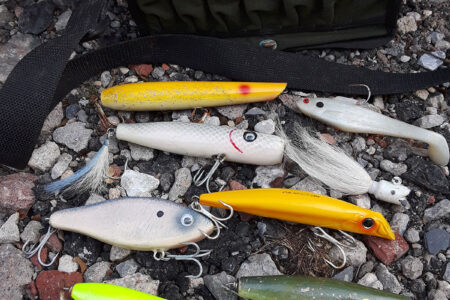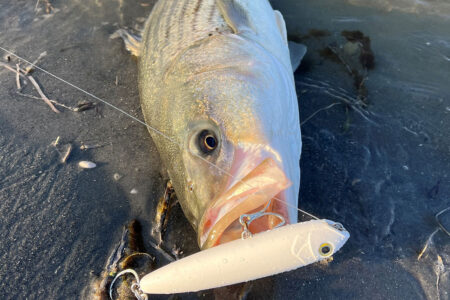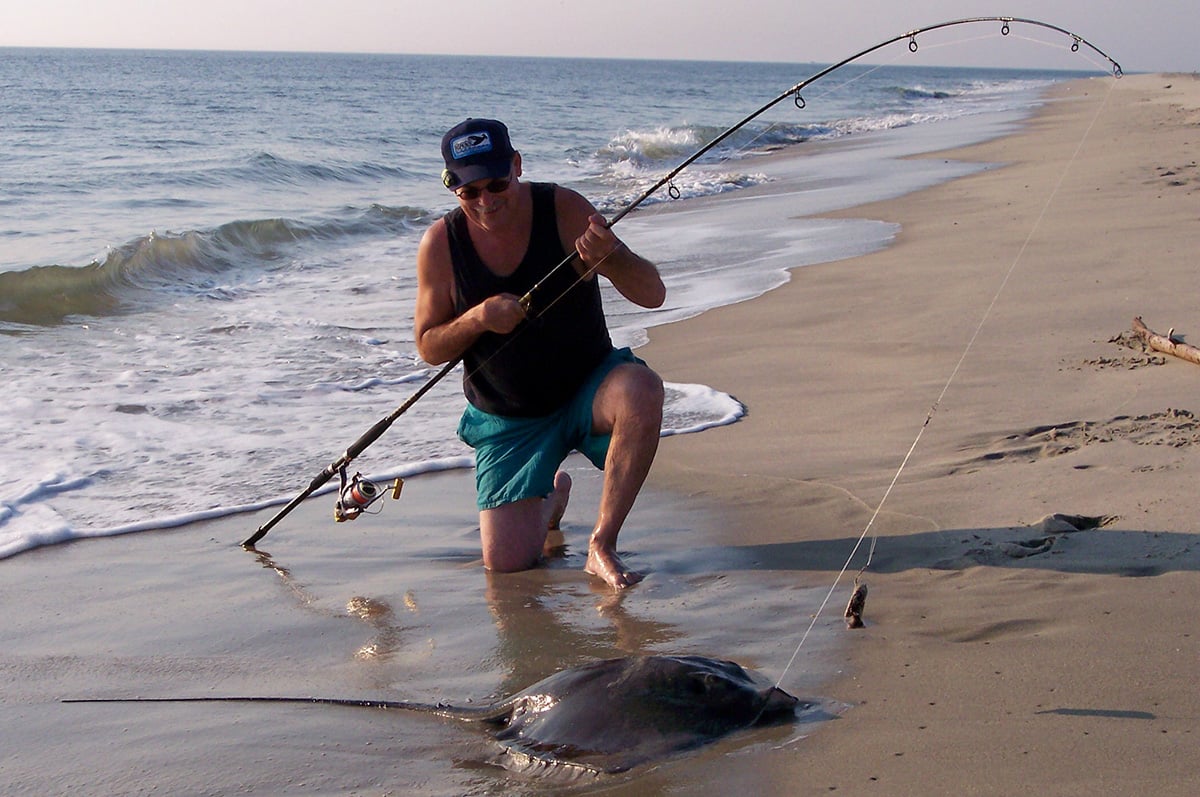
Hooking a big fish in the surf is a great accomplishment but fighting it so you can get it up onto the sand takes both skill and patience.
The challenges involved in fishing the surf are infinite but the rewards can be incredibly satisfying. Hooking a big fish is a tremendous personal accomplishment but fighting it so you can land it takes both skill and patience. Having a smart battle plan and using your gear components as effective weapons is critical to success.
Just so you understand the equation, “big” fish are not always huge; some are just extraordinarily strong for their size. Striped bass can be gigantic but are renowned fighters whatever their size. False albacore are known for their tremendous strength even though they are medium-size fish.
Then again, there are some species you’re apt to encounter this season that are both big and powerful like sharks, big rays and black drum. When the battle lines are drawn, be prepared to mentally outwit and physically defeat strong fish that routinely use cunning and guile in order to survive in a very hostile environment.
Check It Off
Before you hit the sand, make sure your equipment package is ready to do battle. Use rods that match the strength of whichever species you are targeting; your reels – especially their drag systems – should complement your combo. Whether using braid or mono, be sure the line is strong and battle-ready. All hardware components need to be in top shape. Losing a big fish to equipment failure of any kind is just sheer agony.
When that surf monster does come along, your first instinct after hooking into a strong fish should be to simply let it make a run. Most species expend a lot of their power in their initial runs but even the strongest fish cannot sustain huge bursts of energy over an extended period of time. The longer the battle lasts, the more the odds swing in your favor.
Although sometimes nothing can put a stop to blistering run-offs, try turning your rod tip left or right to see if it makes the fish stop its run or at least change its direction. If a fish runs to your right or left, walk with it as it moves along the shoreline. Play the fish; bide your time to take the offensive.
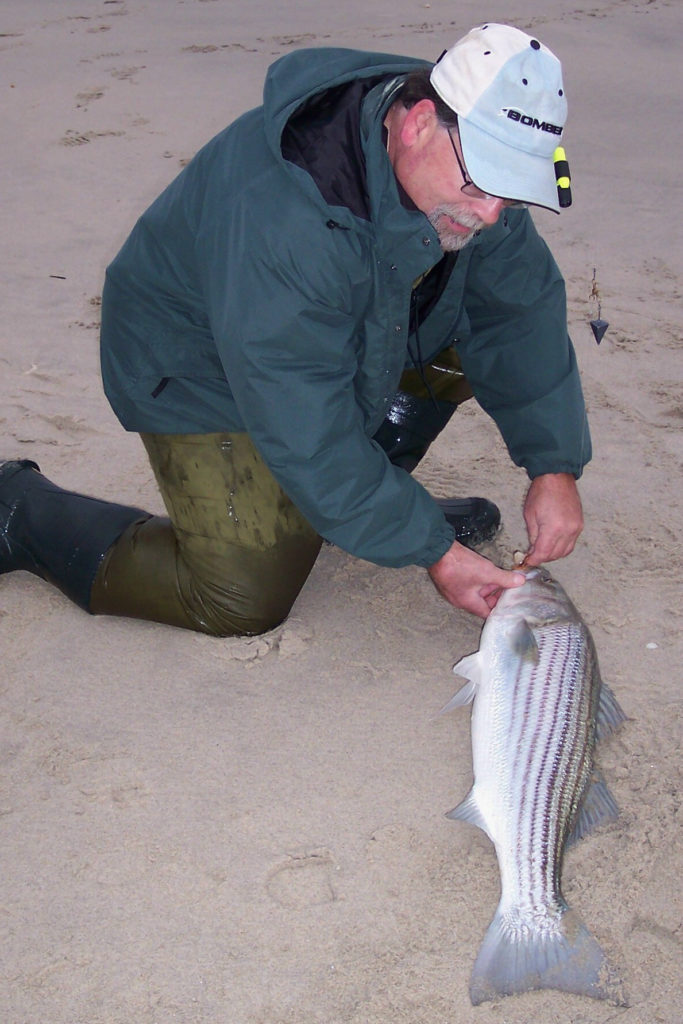
Beach Battleground
Unfortunately, post-Sandy replenishment has sanded over much of the structure along much of the Central and North Jersey coast in particular. If you still fish from a jetty, groin or other rocky structure, always have in your mind a designated “landing zone” where you can gaff or slide a fish should you hook into something significant. Adjacent sandy shorelines at the base of jetties are great landing zones if you are able to steer the fish to them during the fight.
A sandy shoreline is always my preferred battleground as fighting and landing powerful fish in such locales is very advantageous. Plenty of fighting room is available and there is no danger of losing a fish from my line being cut on sharp rocks or submerged structure. Navigating slippery rocks to retrieve a fish is not necessary; there is no need for a gaff.
Think of your surf stick as a multi-purpose landing tool as well. It serves not only as the delivery system for your rigs and lures but also as your primary weapon when you fight the fish in the ensuing battle. Use your rod to your advantage by moving the tip up, left, down, and right during the combat to confuse and guide your opponent. When a fish pushes left, turn your rod tip hard left: the fish often then reverses its direction. When they push hard right, point your rod tip right to turn them left. These tactics tire your opponent so eventually you are able to steer it into the shallows.
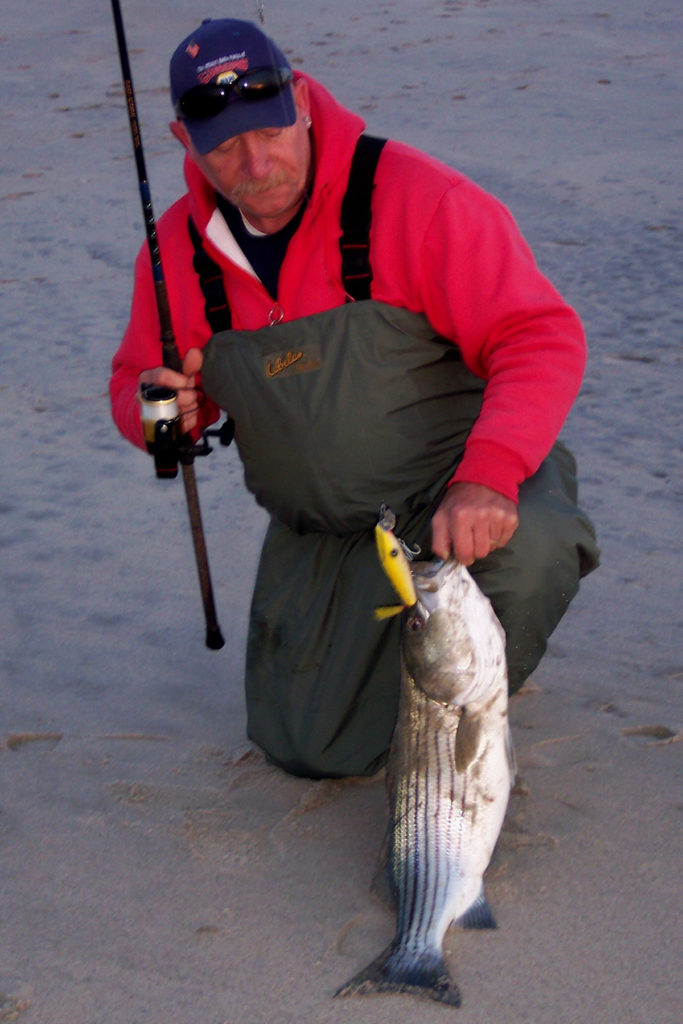
The End Game
While tiring a fish out, do it in a controlled manner. Always keep your line tight but do not use brute force to muscle the fish in. Be sure the drag is set properly, particularly when the fish nears the wash; set so the fish can run off line without snapping it or straightening hooks, but tight enough so the fish has to pay a price in expended energy to do so. Once a fish’s stamina has been impaired, you can make your move to land it.
During the final stage of a struggle, proper drag setting is crucial. A too tight drag can result in lost fish, especially on days when there is rough surf and a strong backwash. Always use incoming waves to your advantage in landing a big fish – but have your drag set so fish sucked back into the wash won’t break the line.
Always be prepared for that “fish of a lifetime” to be on the end of your line. Your gear plays a role in fighting powerful fish but you have to have a preset plan on how to use it. You will win your share of battles with tough fish but you won’t win them all. The ultimate act of reverence toward such fish is to release them so they can fight another day.
| SURF CHECKLIST: 12 RULES OF ENGAGEMENT |
|---|
|

